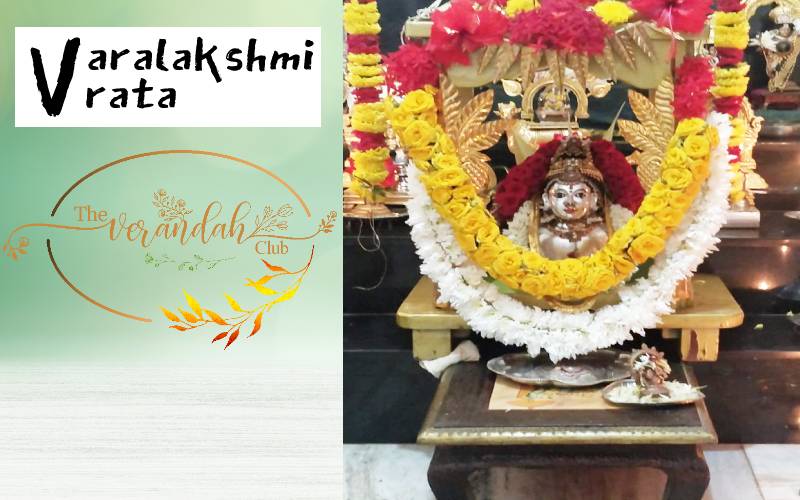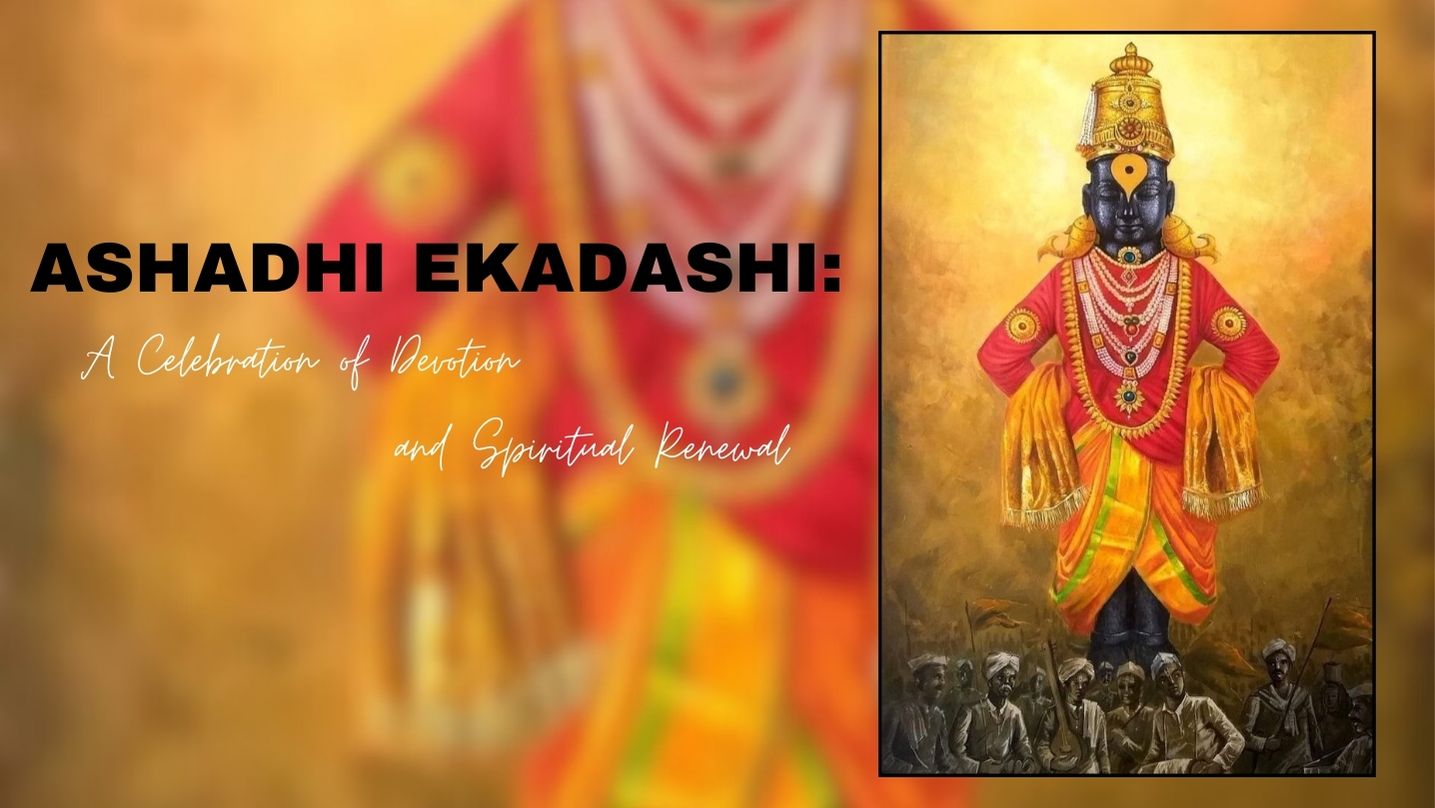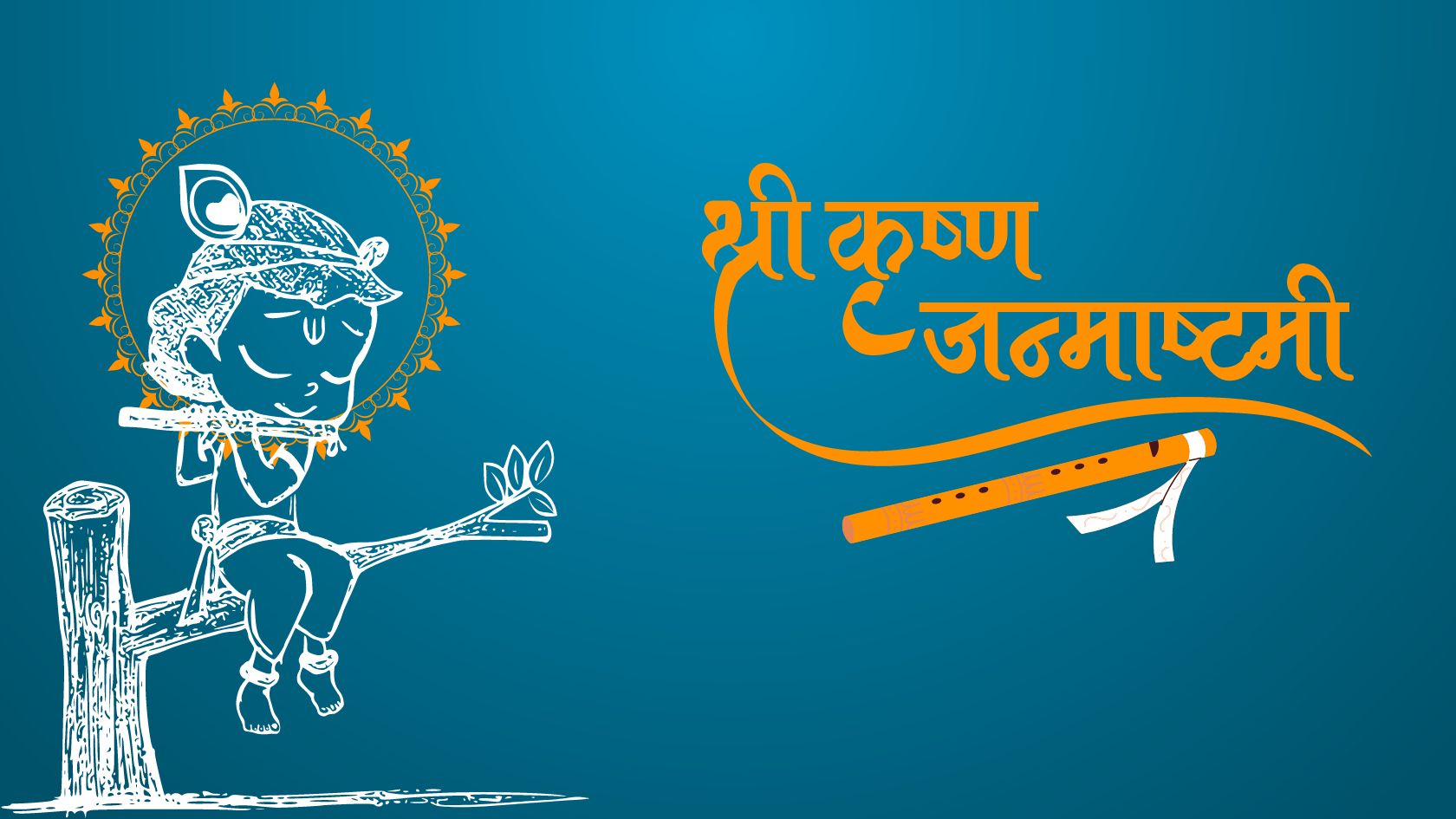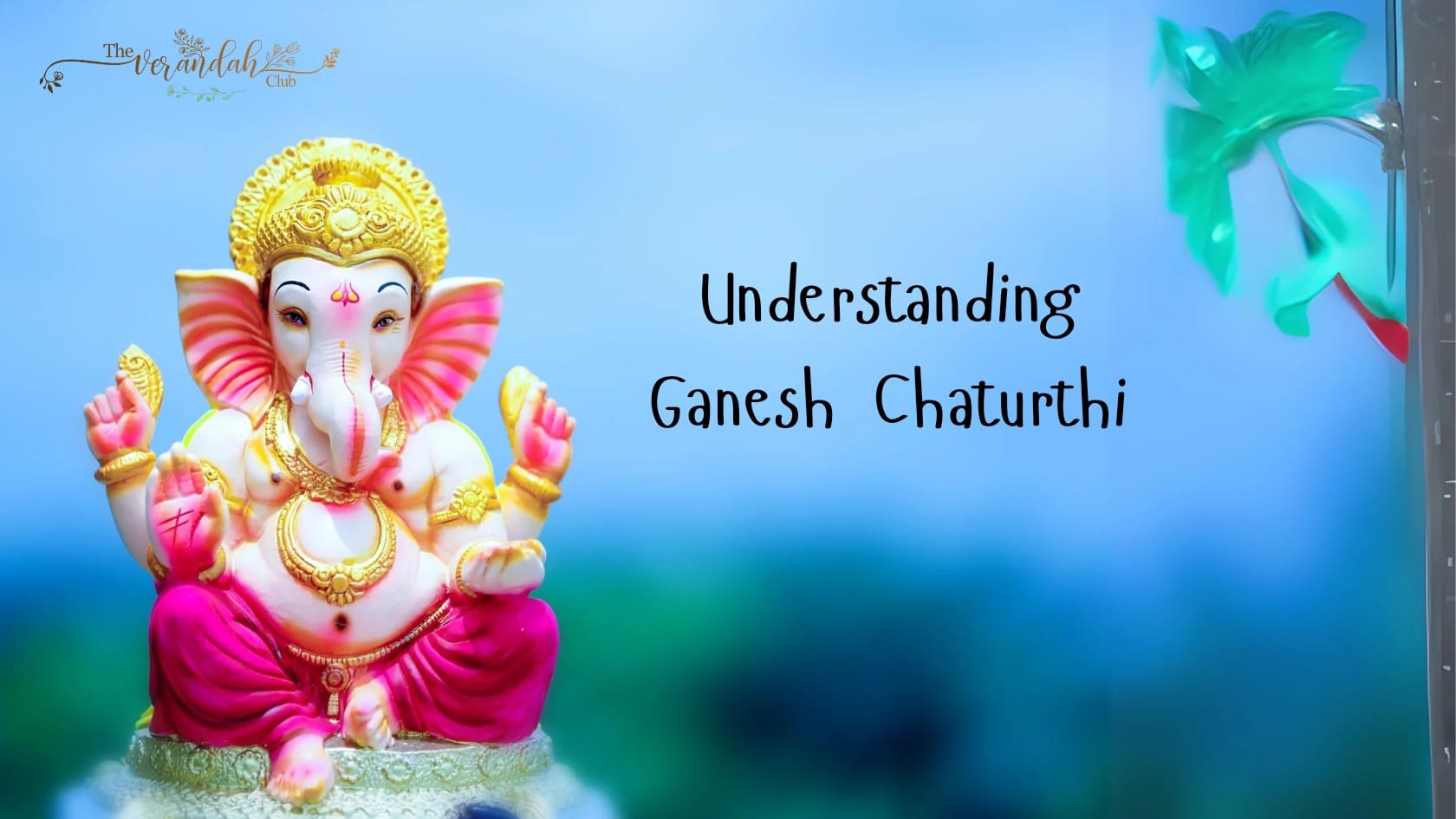
Introduction to Sri Varalakshmi Vrata
Sri Varalakshmi Vrata is an auspicious pooja performed on the last Friday in the Tamil month of Aadi or the first Friday of Aavani. The worship of Goddess Lakshmi bestows not only wealth and prosperity, apart from those she blesses us with satvik qualities like calm and composed nature, happiness, kindness, good husband, happy marital life, concentration, bhakthi towards Lord Narayana, and spiritual upliftment. This pooja can be performed by all women without any discrimination.
Sri Varalakshmi Vrata
Preparations for the Pooja:
Clean the place where the pooja is to be performed. Spread a handful of raw rice on a plantain leaf/clean plate on the floor and place a fresh water-filled brass/silver water-pot on it. Add some fragrant spices like cardamom, saffron, natural camphor, cloves, and nutmeg. Place a bunch of tender mango leaves on the kalasam (Silver water-pot).
Smear turmeric (Mixed with water) paste on a coconut and place this on the kalasam. Keep the kumkum in the shape of a thilak on the coconut. Tie a garment around the kalasam and decorate it with jewellery. Tie a (Silver) face replica of Devi to the turmeric-smeared coconut. Draw kolam in front of the set Devi vigraha. Place two lamps on the either side of the deity. A small mound of turmeric is placed in front of the Devi into which Lord Ganesha will be invoked.
Decorate Devi with poongu thread, vastram, kodi janjam, and flower garlands. Place the Thoram (A thread smeared with turmeric which will be used to make 9 knots) and a small piece of jasmine flower strand on a plate before the Devi.
Arrange Vayanam (Consisting of nine betel leaves, betel nuts, nine turmeric roots, some raisins, two bananas, a spoonful of rice, a piece of moulded jaggery, two small black beaded bangles, and few dates) on a plate in front of the Devi vigraha. Also, keep ready the other pooja items like Gantamani (Bell), Karpoora (Camphor) aarathi, Eka (Lamp with one wick) aarathi, Tri (Lamp with three wicks) aarathi, Tamboolam (Consisting of betel leaves, betel nuts, and 2 halves of a coconut).

Pooja
The pooja as usual starts with chanting pranava mantra (Om) and a prayer to the family deity. Place flowers for Ganesha and recite shukhlaam bharadaram dhyana shloka. Followed by sankalpa, theertha kalasa mantra, Ganesha shodasha nama puja, Lakshmi ashttothram, and thora pooja.
As usual the pooja rituals proceed as per the above-mentioned steps which includes, dhoopa, deepa, naivedyam, and aarathi. Traditionally the naivedyam offered for Goddess Varalakshmi is one big Mudda Kudumi (Rice & coconut idli), and Pappu Payasam (Dhal pudding) and final aarathi is proffered. Tie the thoram around the wrist and circumambulate of the deity. Prostrate in front of the Devi with a complete sense of surrender. After performing the Argyam (The concluding pooja), complete the vrata by reading the story of Varalakshmi Pooja.
Varalakshmi katha is as follows, “In a place named Naimishaaranyam lived a rishi named Sutha Maha Muni. Considering the prosperity and subiksham of women, he told this story to Shaunakaadhi Maharshi-s (Shaunaka & other sages). Earlier this story was conveyed to Parvathi by Lord Shiva.
The story goes as, there lived a pious lady named Charumathi in a place called Kudinapuram in Magadha Desha. She was devoted to her husband and in-laws. One night Goddess Lakshmi appeared in her dream and told her to perform the Varalakshmi Vrata in the prescribed manner.
Charumathi was very happy and she shared this news to the other women. All the women along with Charumathi performed this vrata dutifully. She and her friends received anklets while circumambulating Varalakshmi. They received bangles while performing the second round and a lot of jewellery on the third. They were also blessed with abundance of wealth, horses, elephants, and other forms of riches.”
Thus, by performing the vrata with complete sincerity, one shall be blessed with Aishwaryam (Prosperity) and Shatsampathihi.
Above all, the family of the person performing the vrata surely receives the divine grace of Goddess Varalakshmi!
NEXT ARTICLE

Ashadhi Ekadashi, also known as Shayani Ekadashi, falls on the 11th lunar day (Ekadashi) of the bright fortnight (Shukla Paksha) of the Hindu month of...

Every year, as the monsoon rains dance on the fields of India, an ancient story unfolds in the hearts of millions. It is the story of Krishna, the bel...

Ganesh Chaturthi, also known as Vinayaka Chaturthi, is a significant Hindu festival that honors Lord Ganesha, the deity revered as the remover of obst...